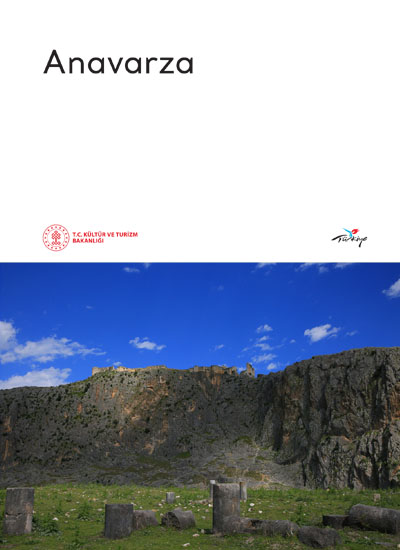Anavarza Ancient Site is located in Dilekkaya village, 28 km south of Kozan district and 70 km northeast of Adana province. The site covers an area of 4,000 decare. Excavations at the ancient site began in 2012. According to epigraphic research, the name of the site comes from the Persian word for invincible, 'NEZARBA'. During the visit of the Roman Emperor Augustus, the city was renamed Caesarea and dedicated to him. Anavarza served as the economic and political capital of the Tarkandimotos Kingdom. In 198 to 203 A.D., Emperor Septimus Severus granted the city the title of Neokoros, followed by the title of Metropolis in 204 A.D. Due to its strategic location, the city was often used as a logistical base for the Roman armies during the conflicts between the cities of Cilicia Pedias (Plain Cilicia) and the Parthians. The city became a leading city when the state council began to gather in the city in 204 A.D. The triumphal arch, the double colonnaded street, the theatre, the amphitheater, the Circus Maximus, the temples, the council building, the necropolis, the bath and other monuments were built during this period. These structures played a significant role in the growth and development of the city. The three-arched triumphal arch known as “Alakapı” opens onto the Decumanus Maximus (colonnaded main street). It was the largest road in the ancient world with a width of 34 meters and a length of 2700 meters. Among the three amphitheatres in Anatolia, the city is home to the best-preserved one. Additionally, the aqueducts, constructed by Domitianus in 92 A.D., are considered one of the longest and best in the world, spanning 25km. The city became the capital of Cilicia Secunda, founded during the the reign of Theodosius II. The city was destroyed by earthquakes in 525 and 561 A.D. It was rebuilt during the reign of Justianius I. The city was invaded by various groups, including the Arabs in the 7th and 8th centuries AD. The ownership of the city changed several times between the Arabs and the Byzantines in the following centuries. The city consisting of a magnificent 1500 m. city walls with 20 bastions can be seen from the plain. The city was invaded by Toros I who fled from Alparslan in 11th century A.D. and it became capital of the Armenian Kingdom. After the Memluk invasion in 1375, the city was destroyed and lost its importance. Anavarza, is considered to be the center of the myth of the god Zeus Olybris. The famous pharmacologist Dioscorides who worked in the Roman army during the reign of Emperor Nero and was known to society as Lokman Hekim, was born in the city. Dioscorides is widely regarded as the father of pharmacology, due to his five-volume scientific work 'De Materia Medica'. It is also worth noting that Oppian, a highly esteemed poet, was born and lived in the city. According to historical sources, the city was home to numerous weaving workshops.
ANAVARZA ARCHAEOLOGICAL SITE


